How I do it: Using Videos & Instructional Feedback to Support Communication Partners
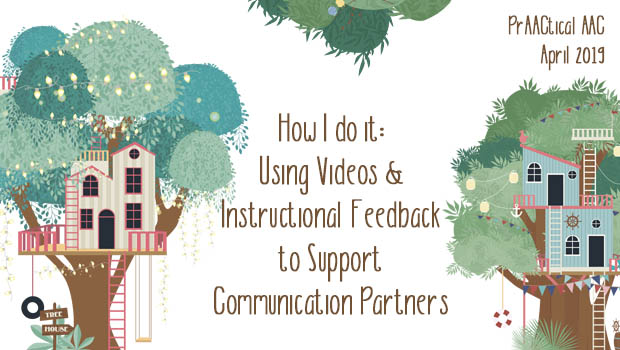
As AAC interventionists well know, we can improve learning outcomes by getting key communication partners to use specific strategies to  support AAC learning. How can we do that effectively and efficiently? Today, we hear from Laura Hayes, an AAC Facilitator for Special School District of St. Louis County, Missouri. Using her 10+ years of AAC experience, Laura provides support to staff and students across 4 school districts. She has presented locally and at state, national, and international conferences, and has been involved in both inpatient pediatric and educational AAC research. Laura loves providing staff training, implementation resources and guided direction to help students using AAC succeed. In today’s guest post, she shares her experiences and tips for supporting communication partners. (Don’t forget to download the resources she is sharing before you go.)
support AAC learning. How can we do that effectively and efficiently? Today, we hear from Laura Hayes, an AAC Facilitator for Special School District of St. Louis County, Missouri. Using her 10+ years of AAC experience, Laura provides support to staff and students across 4 school districts. She has presented locally and at state, national, and international conferences, and has been involved in both inpatient pediatric and educational AAC research. Laura loves providing staff training, implementation resources and guided direction to help students using AAC succeed. In today’s guest post, she shares her experiences and tips for supporting communication partners. (Don’t forget to download the resources she is sharing before you go.)
:::::::::::::::::::::::::::::::::::::::::::::::::::::::::::::::::::::::::::::::::::::::::::::::::::::::::::::::::::::::::::::::::::::::::::::::::::::::::
How I do it: Using Videos and Instructional Feedback to Support Communication Partners
Prior to the Training
In a large district with a heavy caseload, it is sometimes difficult to meet staff and students at different levels of skills and with individual needs related to Augmentative and Alternative Communication (AAC). The Participation Model (Beukelman & Mirenda, 2013) highlights that students with complex communication needs struggle with opportunity barriers to communicative success related to staff involvement. Policy, practice, knowledge, skill, and attitude of staff impact student performance. In thinking of this model, it is important to continually assess how staff knowledge of strategies and carry over using AAC can support increased student success and Individualized Education Program (IEP) gains.
Familiarity with advanced partner instruction techniques, such as the 8-step Instructional Model adapted by Jill Senner and Matthew Baud (2016), is one well-known method that supports the needs of staff and skills related to AAC. (Senner & Baud, 2016; See their previous posts here). It allows for advanced practice and feedback in addition to traditional training methods. In a large district of many different systems, age ranges, and skills levels, this model can be used by any school team and language analysis can be used to see its impact on student outcomes. In the Special School District of St. Louis County, this approach was utilized to determine if such an effect was seen.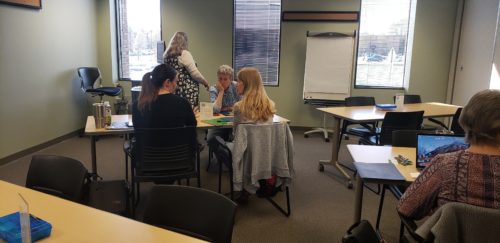
During the Training
During traditional 1-day workshop training, staff was given stages 1-5 to learn the essentials of supporting AAC systems (e.g., aided language input, prompting, creating opportunities, wait time). Participants included paraprofessionals, teachers, and speech-language pathologists. Staff was given prompting resources, google drive resources, and a planning sheet for individual student reflection (see pictures). Staff were given the acronym “make” AAC successful with important takeaway messages to help support retention of the facilitation methods: Modeling, Asking open-ended questions, Keep waiting (at least 5-8 seconds to respond/prompt), and Expanding what a student says.
After traditional workshop training, staff had the opportunity to receive additional feedback through direct video feedback. A trained AAC facilitator videoed a 15-minute language sample of a staff-chosen educational activity. The video was then shared with staff and examined by the AAC facilitator using an observational feedback form (see picture) to expand staff facilitation strategies. After this meeting, the staff had the chance to co-teach with the AAC facilitator in the same activity to support the discussed facilitation methods. Finally, another language sample video was taken to see a change in student performance. The best part about this follow-up and training—the total time to support the staff and student was less than 60 minutes and occurred over the course of 13 weeks.
Staff and students were videoed for language analysis through Systematic Analysis of Language Transcripts (Miller & Iglesias, 2012), a known tool to support analyzing language samples. Staff who were exposed to the 8-step instructional method modeled more to students from both primary and secondary schooling. Students in that group showed a statistical difference in their overall mean length utterance and an increase in overall pragmatic function uses of communication during the language sample.
Following the Training
Feedback was anecdotally and objectively positive for student and staff gains. Staff indicated a better understanding of student devices and fluidity of implementation across settings was observed. Students used devices more imitatively and spontaneously, showed more ownership over their device, and showed increased social rapport and engagement with their staff overall.
In taking feedback from the design of using this method and in looking more closely at opportunity barriers to communication, a few new tools were designed. The first is a strategies checklist (see download link at the end of this post) to support teams in fine-tuning and strengthening the established skills, particularly if a student would plateau or a software or system change would be considered.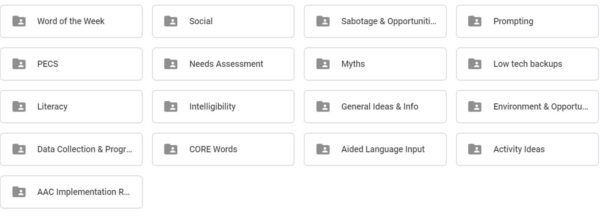
The second resource is a student communication plan to coordinate target vocabulary for the student and the communication partners, target IEP goals, and any additional AT tools that might be utilized to support a student in an educational activity. 
Lastly, a monthly newsletter was designed to support staff in the five areas of barriers to communicative success: policy, knowledge, practice, skill, and attitude. The newsletter provides district staff with specific examples and rationale of strategies, resources, an activity to practice using AAC with recommended target words, and sample student and staff videos, as well as shout outs to district staff. 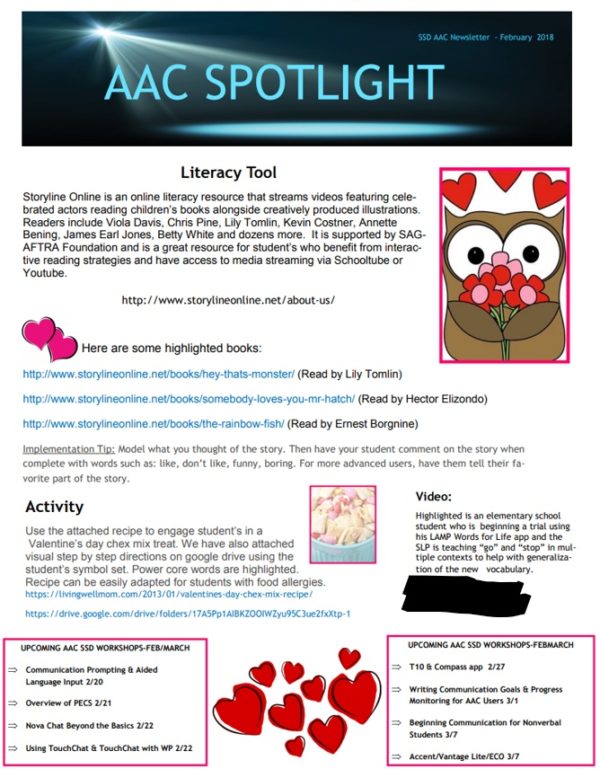
Using the 8-step instructional model and video feedback created a shift in facilitator coaching methods. Staff with advanced learning opportunities had improved the perception of AAC implementation strategies and knowledge. They also showed a decrease in need for help from the AAC facilitator. It improved barriers to opportunities for communicative success and facilitated improved staff and student achievement. One of the teachers, who participated in the model, said it best when speaking about supporting students with AAC. “It’s hard work, it can go really slowly, and it’s totally worth it.”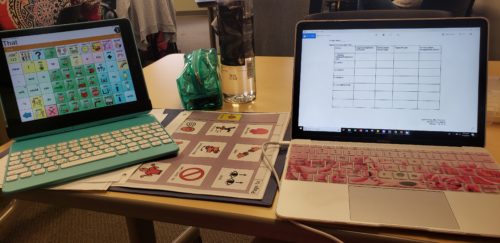
:::::::::::::::::::::::::::::::::::::::::::::::::::::::::::::::::::::::::::::::::::::::::::::::::::::::::::::
You can access Laura’s resource documents here.
Filed under: Featured Posts, PrAACtical Thinking
Tagged With: AAC partner training, classroom, school
This post was written by Carole Zangari


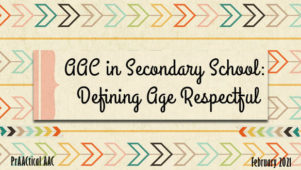

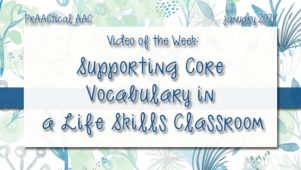
1 Comment
Hi all. just want to say your blog is very informative and a fantastic resource!